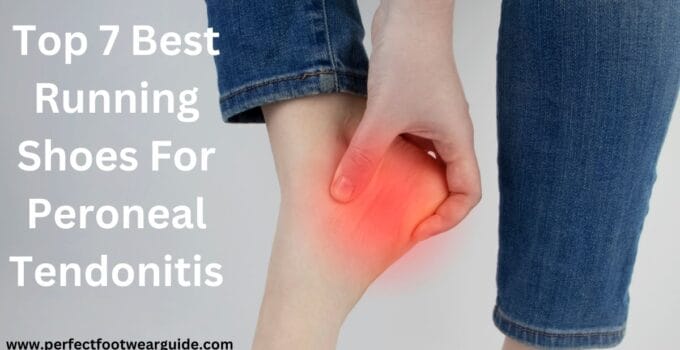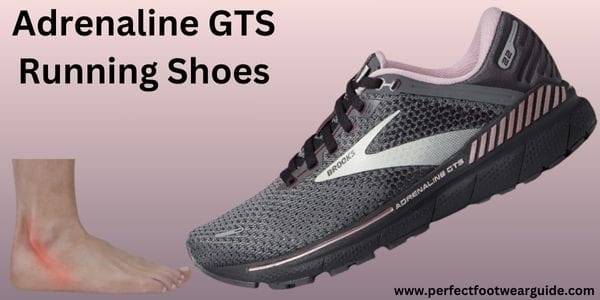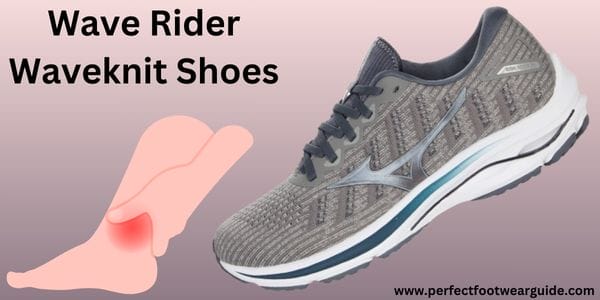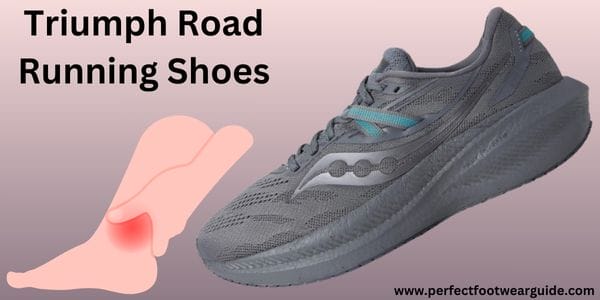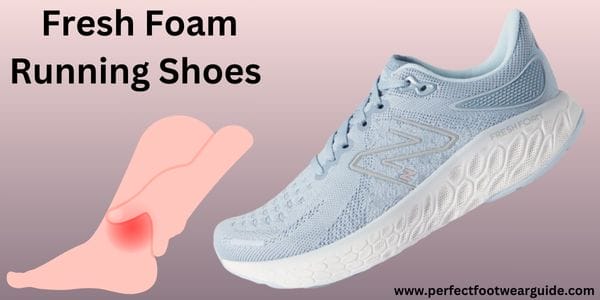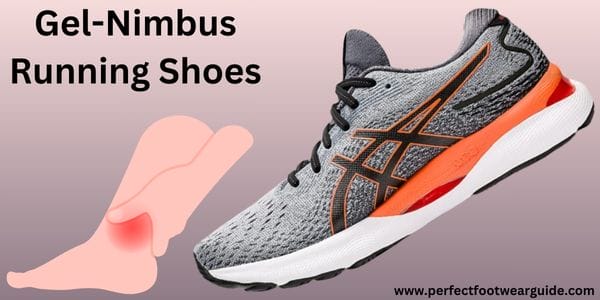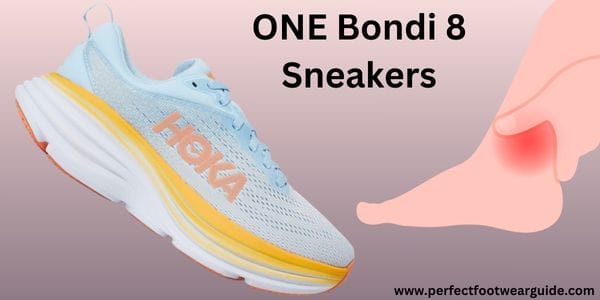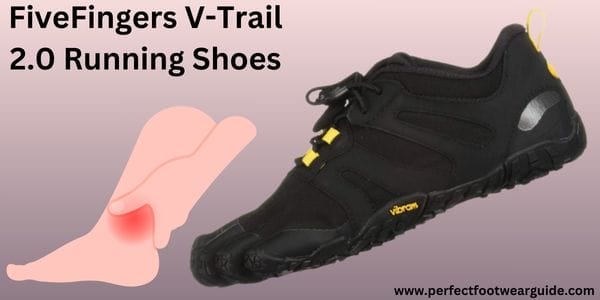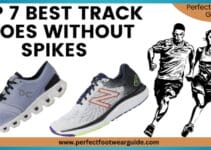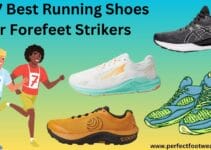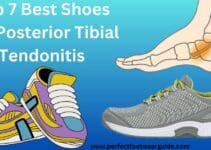Running can be a great way to keep yourself in good shape and feel healthy. However, picking the right running shoes is essential if you have peroneal tendonitis. Peroneal tendonitis is a painful problem when the tendons around the outside of your ankle get hurt.
This can be due to using your feet too much or wearing the wrong shoes. In this article, we will discuss the best running shoes for peroneal tendonitis so that you can find a comfortable pair that gives you the support you need.
What is peroneal tendonitis?
Peroneal tendonitis is a condition that affects your ankle, causing pain and discomfort. To understand it better, let’s break it down into three main parts:
What are Tendons?
Tendons are like solid ropes in your body that connect your muscles to your bones. They play a crucial role in letting your muscles pull on your bones, allowing you to move. In your ankle, peroneal tendons help control how your foot moves and stabilize your ankle.
What Causes Peroneal Tendonitis?
Peroneal tendonitis happens when these peroneal tendons get irritated and inflamed. This inflammation can be due to different reasons:
1- Overuse: If you do activities that stress your ankles a lot, like running or playing sports, it can strain the tendons.
2- Improper Footwear: Wearing shoes that don’t support your feet correctly or don’t fit well can increase the risk of peroneal tendonitis.
3- Ankle Injuries: Past ankle injuries can weaken the tendons, making them more prone to inflammation.
4- Abnormal Foot Structure: Having very high arches or flat feet can affect how your foot moves and increase the chances of tendon problems.
Symptoms of Peroneal Tendonitis
When you have peroneal tendonitis, you might experience various symptoms:
1- Pain: The most common symptom is pain on the outer side of your ankle. This pain can range from mild to severe and may worsen during physical activities.
2- Swelling: The area around your ankle may become swollen due to the inflammation of the tendons.
3- Tenderness: You might feel love when you touch the area where the peroneal tendons are.
4- Weakness: Your ankle may feel weak, making it hard to support your body weight or do physical activities.
5- Instability: Some people with peroneal tendonitis may feel like their ankle is unstable, making them more likely to sprain it.
Peroneal tendonitis is when the tendons in your ankle become inflamed, leading to pain, swelling, and discomfort. It is often caused by overuse, wearing the wrong shoes, previous ankle injuries, or unusual foot structure. Recognizing the symptoms and getting proper treatment can help you manage this condition and prevent it from worsening.
Types of running shoes for peroneal tendonitis
If you are dealing with peroneal tendonitis, picking the right running shoes to protect your feet and ankles while you run is essential. Here are different types of running shoes that can help people with peroneal tendonitis, explained in simple terms:
1- Stability Running Shoes: These shoes are designed to balance your feet. They have extra support inside to prevent your feet from rolling too much, which can strain your peroneal tendons. They also support your arch and help keep your foot and ankle steady when you run.
2- Motion Control Running Shoes: These shoes are for people with severe overpronation, where your feet roll too far inward. They provide even more support than stability shoes to control this rolling and reduce stress on your peroneal tendons.
3- Cushioned Running Shoes: These shoes have soft and comfy midsoles. They absorb shock well, which is helpful for peroneal tendonitis. The cushioning lessens the impact on your feet, reducing the risk of worsening the condition.
4- Minimalist Running Shoes: These are lightweight shoes with a lower heel-to-toe drop. They encourage a more natural running style for some people with peroneal tendonitis. However, please consult a healthcare pro before trying them.
5- Orthopedic Running Shoes: These shoes are custom-made to address foot and ankle issues. They provide the support and cushioning you need for peroneal tendonitis and are prescribed by a podiatrist or orthopedic specialist.
6- Wide-Width Running Shoes: If you have peroneal tendonitis, you might find relief in running shoes with more room for your toes to spread out. This reduces pressure on your feet’s sides and can ease discomfort.
7- Trail Running Shoes: These shoes are for running on uneven terrain. They provide extra stability and protection, which can be helpful for people with peroneal tendonitis.
8- Custom Orthotics: While not shoes, custom orthotics are specialized insoles that can go inside your running shoes. They offer personalized support and alignment for your feet, which is excellent for those with peroneal tendonitis.
When choosing the right running shoes for peroneal tendonitis, it’s crucial to talk to a healthcare professional or podiatrist. They can evaluate your condition and running style to recommend the best shoe type. Additionally, try different brands and models to find the shoe that fits and supports you the best.
How do you choose the best running shoes for peroneal tendonitis?
Choosing the perfect running shoes for peroneal tendonitis is essential to ensure your runs are comfy and lower the chance of more pain or injury. Here’s a detailed guide on how to pick the right shoes:
1- Arch Support: Look for shoes with good arch support. Peroneal tendonitis often happens because of too much use and strain on your tendons. Good arch support can help spread your weight evenly and ease the stress on your tendons.
2- Cushioning: Choose shoes with lots of cushioning. Well-cushioned shoes can soak up the shock when your foot hits the ground. This is crucial to lessen the pressure on your tendons and give you a pleasant running experience.
3- Stability: Make sure your running shoes offer stability. This is vital for people with peroneal tendonitis because it stops your ankles from rolling too much, which can strain the tendons. Look for shoes with a strong and secure base.
4- Flexibility: Find shoes that balance being flexible and stable. You want your shoes to let your feet move naturally while still giving support. Shoes that are too stiff can mess up your walking style, so choose ones that let you walk comfortably and naturally.
5- Proper Sizing: Make sure your running shoes fit just right. Too tight shoes can put more pressure on your tendons, while loose shoes can make you unsafe. Ensure there’s enough room for your toes to move comfortably, and think about getting your feet measured to find the right size.
6- Arch Type: Know your arch type. Some people have high arches, while others have flat feet. Knowing your arch type helps you choose shoes made for your specific needs. High arches need more cushioning, while flat feet need extra support.
7- Professional Advice: Talk to a foot doctor or an expert at a running shoe store. They can watch how you walk and suggest shoes just right for you. Their advice can be beneficial in finding the perfect pair of running shoes.
8- Brand and Model: Think about well-known brands and shoe models known for being high quality and well-designed. Top brands usually do a lot of research to make running shoes that give the support and comfort that runners with peroneal tendonitis need.
9- Try Before You Buy: Before you decide to buy, try on the shoes and take them for a quick jog or walk. This will help you figure out how they feel when you’re moving and if they give you the support and comfort you need.
10- Replace Old Shoes: Regularly get new running shoes. Running shoes don’t last forever and can lose their cushioning and support over time. You should replace them every 300-500 miles or when you notice any signs of wear.
11- Budget: Set a reasonable budget. Good running shoes can be pricey, but they’re essential for your comfort and safety. Find a balance between your budget and the features that matter most to you, like arch support and cushioning.
The best running shoes for peroneal tendonitis should have excellent arch support, cushioning, stability, and flexibility. Finding the perfect fit, getting professional advice, and trying out the shoes are all essential steps in finding the right running shoes that are comfortable and supportive. Remember that investing in the right shoes can make a big difference in your running experience while dealing with peroneal tendonitis.
Reviews of the best running shoes for peroneal tendonitis
If you suffer from peroneal tendonitis, then you know that finding the right running shoe can be a challenge. Here are reviews of the best running shoes for peroneal tendonitis based on user feedback and our research:
1- Brooks Adrenaline GTS 22 running shoes
Are you looking for the best running shoes to help with peroneal tendonitis and provide excellent support for your running? Look at the Brooks Adrenaline GTS 22. These running shoes are designed to make running comfortable, stable, and safe for your feet and knees.
The Brooks Adrenaline GTS 22 has several features that make it an excellent choice for runners dealing with overpronation, peroneal tendonitis, or extra stability.
1- Updated Mesh Upper with 3D Print: The shoe’s upper is made of a special mesh with a 3D print, providing extra structure and support to keep your feet secure and reduce the risk of injury.
2- Holistic GuideRails Support System: Brooks has included their innovative GuideRails support system. It protects your knees by preventing excessive movement during your runs. This technology helps guide your stride, promoting safer and more efficient running.
3- High-Energizing Cushioning: The Adrenaline GTS 22 offers excellent cushioning for the support you need without sacrificing comfort.
4- Road Surface Ready: Whether running on the road or using a treadmill, these shoes are perfect for both.
5- 12mm Differential: The 12mm differential provides a good balance between heel and forefoot support, reducing strain on your feet and legs.
6- BioMoGo DNA and DNA Loft Midsole: Combining BioMoGo DNA and DNA Loft midsole cushioning offers a soft yet supportive foundation for your feet. It’s responsive and durable, allowing you to run longer.
7- Progressive Diagonal Rollbar: This feature is a midsole with different densities that helps control pronation and ensures smoother transitions during your running cycle.
8- Full-Length Crash Pad: The Adrenaline GTS 22 has a full-length, segmented Crash Pad for a smooth and comfortable ride.
9- HPR Plus Outsole: The outsole is made of HPR Plus rubber, providing exceptional durability in high-wear areas.
10- Flextra Rubber Outsole: This outsole adapts to different genders and weights, offering variable support and flexibility.
11- APMA and PDAC Approved: The Brooks Adrenaline GTS 22 holds the American Podiatric Medical Association Seal of Acceptance and the PDAC A5500 approval. It is an excellent choice for Medicare beneficiaries with specific foot health needs.
With all these features, you can trust that the Brooks Adrenaline GTS 22 is one of the best running shoes for peroneal tendonitis, whether you are an experienced runner or just starting your fitness journey. These shoes provide the comfort and support your feet need.
So, why wait? Step into a world of pain-free, enjoyable running with the Brooks Adrenaline GTS 22! Your feet will thank you, and your peroneal tendonitis will take a back seat as you easily conquer the road.
Pros
- Excellent support for peroneal tendonitis.
- GuideRails system protects knees and reduces excess movement.
- High-energy cushioning for comfort.
- Road-ready and durable.
Cons
- A slightly higher heel-to-toe drop at 12mm may not suit all runners.
- The price point may be on the higher side.
2- Mizuno Wave Rider 25 Waveknit Shoes ( Best shoe for peroneal tendonitis )
The Mizuno Wave Rider 25 is a fantastic running shoe perfect for folks with peroneal tendonitis. These shoes are designed to give you the best combination of comfort, support, and performance.
1- WaveKnit Upper: The top part of the shoe is made with WaveKnit material, which is breathable and fits your feet like a comfy sock. It’s stretchy, so it’ll feel snug but not too tight. Plus, it’s built to last so that these shoes will stick with you for a while.
2- MIZUNO ENERZY Foam: These shoes come with a unique foam called MIZUNO ENERZY. It’s soft and bouncy, balancing comfort and performance well. So, whether you’re going for a quick jog or a long run, these shoes will help you do your best.
3- Wave Technology: The Wave Rider 25 Waveknit uses Wave technology to cushion your feet, support, and stabilize your run. This technology soaks up shocks, which is essential for people with peroneal tendonitis.
4- U4ic Midsole with AP+ Sole: The midsole (the part in the middle of the shoe) is made of U4ic material and has an AP+ sole. This combo gives you more bounce and cushioning without adding extra weight. It’s great for folks with peroneal tendonitis because it eases the strain on your tendons while making you feel light on your feet.
5- X10 Carbon Rubber Outsole: The outsole, or the bottom of the shoe, is made of X10 carbon rubber. It’s durable and will last a long time. Plus, it gives you good traction, so you can run confidently on different kinds of ground without slipping.
In terms of how they look, these shoes have a classic lace-up design and a round-toe shape. The upper, lining, and insole are comfy and easy to keep clean. The synthetic outsole is rugged and can handle all the running you throw at it.
So, if you’re searching for the best running shoes for peroneal tendonitis, the Mizuno Wave Rider 25 Waveknit is a fantastic choice. Its innovative design and excellent features make it a top pick for runners who want both comfort and performance.
Pros
- It provides a breathable and snug fit for maximum comfort during extended wear.
- These shoes offer versatile and resilient cushioning to enhance performance capabilities.
- It is a comfortable and stable ride.
- It provides increased rebound and cushioning without adding unnecessary weight.
Cons
- Some users prefer a more traditional look.
- The price point may be higher compared to some other running shoe options.
3- Saucony Triumph 20 Road Running Sneakers
The Saucony Triumph 20 Road Running Shoes are a fantastic choice for style and comfort when you’re out on the track. These sneakers aren’t your typical running shoes. They’re specially designed to provide excellent support and relief, making them a great option for people dealing with peroneal tendonitis.
1- Adding Style to Your Wardrobe: The Saucony Triumph 20 sneakers are more than just shoes for running. They add a touch of style to your wardrobe. Their sleek design and attractive asphalt color make you look good whether you’re hitting the track or enjoying a casual day out.
2- Keeping Your Feet Comfortable: Regarding running shoes, breathability is crucial. These sneakers have a breathable textile upper and lining, so your feet stay fresh and comfortable throughout your run. No more sweaty, uncomfortable feet; the Triumph 20 takes care of that.
3- Tailored Support: Each pair of these running shoes comes with a removable textile insole, allowing you to customize the fit to your liking. This feature is beneficial if you have specific orthotic needs or prefer a customized insole for added comfort.
4- A Snug Fit: You can achieve a secure and snug fit with a lace-up closure and a handy pull tab on the back. The padded collar and tongue enhance comfort and ensure an irritation-free running experience.
5- Cushioning for Your Ride: The Triumph 20 features a PWRRUN+ midsole that is lightweight and responsive. This technology provides soft cushioning throughout your run, reducing the impact on your feet and legs. It’s an excellent choice for individuals with peroneal tendonitis who require extra support and cushioning.
6- Great Traction: The durable rubber outsole offers excellent traction on various surfaces. Whether running on the track, pavement, or trails, these shoes keep you steady and confident.
7- Quality You Can Trust: These shoes are crafted with precision and are imported. It ensures a high standard of quality that Saucony is renowned for.
The Saucony Triumph 20 Road Running Shoes go beyond being just ordinary sneakers. They offer style, comfort, and support, making them the perfect choice for individuals looking for the best running shoes for peroneal tendonitis. So, lace up, hit the track, and experience the triumph of running in these exceptional shoes.
Pros
- The shoes are more flexible and durable than traditional running shoes.
- It provides a snappier ride.
- It has a new blown rubber outsole, which increases durability and traction.
- The TRI-FLEX design provides quick transitions and enhanced flexibility.
Cons
- Some reviewers said the shoes were too tight.
4- New Balance Fresh Foam Running Shoes ( Best shoes for peroneal tendonitis )
Do you love running but find yourself struggling with long-distance weariness and soreness? If so, you are not alone. Running can be a great way to get exercise and improve cardiovascular health. Still, it can also be very taxing on your feet and ankles.
One solution is switching to a running shoe with cushioning and supportive features to alleviate pain and fatigue. The New Balance Fresh Foam running shoes are designed to offer just that.
The Fresh Foam midsole cushioning is precision-engineered to deliver an ultra-cushioned, lightweight ride. This combination results in a comfortable and supportive shoe, even running longer.
The shoes are Bootie upper construction that hugs your foot for a snug, supportive fit. It is the synthetic mesh upper. It is durable and breathable, and the Ortholite sock liner provides added comfort.
This shoe’s Ultra Heel design helps provide a snug, supportive fit on the back of the foot. The running shoes also come with a heel-to-toe stretch for a custom fit.
Overall, the New Balance Fresh Foam running shoes are designed with your comfort and running performance in mind. So whether you are looking for a more cushioned run or a shoe that provides more support and cushioning, the Fresh Foam 1080 v12 is a good choice.
Pros
- The Fresh Foam midsole cushioning is designed to deliver an ultra-cushioned, lightweight ride.
- A Bootie upper construction hugs your foot for a snug, supportive fit.
- The Ortholite sock liner provides comfort and lasting support.
- The Ultra Heel design hugs the back of the foot for a snug,
- supportive fit.
- These shoes are perfect for outdoor activities such as running and hiking.
Cons
- Some people may find shoes too tight or uncomfortable when first wearing them.
5- ASICS Gel-Nimbus 24 Running Shoes
ASICS is releasing a new running shoe called the Gel-Nimbus 24. Running in this shoe is more comfortable and offers better impact protection. The shoes have a soft, engineered mesh upper. It is a GEL cushioning system that helps reduce shock during the impact and toe-off phases.
The 3D space construction feature also improves compression at the footstrike. It is essential for long-distance runners. These shoes are rearfoot, and the forefoot GEL Technology Cushioning System helps attenuate shock during the gait cycle.
This new Gel-Nimbus 24 is approximately 20g lighter than the previous version. It is an excellent option for runners who want a lightweight running shoe. These shoes are more comfortable during long runs thanks to the soft engineered mesh and the flexible midfoot panel.
The FF BLAST PLUS cushioning keeps the shoe light and provides a more peaceful feeling underfoot. This material also helps improve foot stability and movement in multiple planes.
It is available online and at select running stores. Suppose you want a lightweight running shoe with improved impact protection and comfort. The Gel-Nimbus 24 is a great option.
Pros
- Advanced impact protection.
- Soft-engineered mesh is upper.
- Midfoot panel for flexibility and comfort.
- FF Blast provides a smooth ride.
Cons
- The upper may be too soft for some runners.
6- HOKA ONE ONE Bondi 8 Sneakers ( Hoka shoes for peroneal tendonitis )
You want comfort and support if you are looking for the perfect pair of running shoes. That’s where the HOKA ONE Bondi 8 Shoes come in. Not only are they designed with comfort in mind, but they’re also eco-friendly and affordable.
The shoes are made of a synthetic material, which makes them environmentally friendly. The rubber sole ensures that they’re durable and weather-proof. The lace-up closure makes them easy to put on and take off. It is excellent for those with busy schedules.
They come in various colors and styles to suit everyone’s needs. The Bondi 8 Shoes are affordable, making them an affordable option for those on a budget. Since they are made of synthetic materials,
They can be worn multiple times before they show signs of wear. So, whether you are looking for the perfect running shoe to take your training to the next level or just starting, the HOKA ONE Bondi 8 Shoes are a great choice.
Pros
- The shoes are made of synthetic materials, which makes them environmentally friendly.
- They have a rubber sole, which makes them durable and weather-proof.
- The shoes have a lace-up closure, making them easy to put on and take off.
- The shoes are available in various colors and styles to suit everyone’s needs.
Cons
- The shoes may not be suitable for all types of weather conditions.
7- Vibram FiveFingers V-Trail 2.0 Running Shoes
Are you in the market for a new running shoe? Do you want to try a vegan shoe? You would be lucky if you answered yes to either of those questions! Vibram FiveFingers is a company that makes vegan and machine-washable shoes.
Vegan shoes are becoming increasingly popular, and there are many reasons. One reason is that vegan shoes are better for the environment. In contrast to leather shoes, vegan shoes are made from materials that can be recycled easily.
Vegan shoes are often made from more comfortable materials, such as rubber. Another reason to buy vegan shoes is that they are better for your feet. Leather shoes can harm your feet, and vegan shoes are made from materials that are much more resistant to wear and tear.
These shoes are often much lighter than leather ones, making them more comfortable. You should check out the Vibram FiveFingers line if you are in the market for a new running shoe.
These shoes are vegan and machine-washable, so you can easily keep them clean. Moreover, they are made from high-quality materials that will last long.
Pros
- The shoes are vegan and made with synthetic material.
- The shoes are lightweight and provide good cushioning for running.
- They are easy to clean and maintain.
- They come in different colors and styles to suit everyone’s needs.
Cons
- It may not provide the same level of support as a traditional running shoe.
Top 7 Best Shoes For Peroneal Tendonitis
How to treat peroneal tendonitis?
If you experience pain or inflammation on the outside of your ankle or heel, you may have peroneal tendonitis. Peroneal tendonitis is a common problem that can be treated with simple steps.
Here are five tips for treating peroneal tendonitis:
1- Rest and ice
First and foremost, take some time to rest and ice the affected area. This will help reduce inflammation and pain.
2- Acupuncture
Acupuncture can also be beneficial in treating peroneal tendonitis. The needles can help to stimulate the healing process and reduce inflammation.
3- Nonsteroidal anti-inflammatory drugs (NSAIDs)
If the pain is severe, your doctor may recommend taking an NSAID such as ibuprofen. However, speak with your doctor first to ensure this is your best action.
4- Surgery
If none of the above treatments works, your doctor may recommend surgery. This is only done in extreme cases and typically only if other treatments have failed.
5- Physical therapy
If you have tried all the above treatments and still have difficulty healing, you may need to see a physical therapist. This person can help you regain the range of motion in the affected area and help to reduce inflammation.
Conclusion
Finding the right running shoes is essential if you suffer from peroneal tendonitis. Not only will finding the right pair help reduce your pain, but they may also improve your running performance.
In this article, we will review some of the best shoes for peroneal tendonitis and provide guides on how to choose them. This information will help you find the perfect shoes for your unique needs and make running more enjoyable.
FAQs
Here are some questions and answers for help to choose the best running shoes for peroneal tendonitis:
What shoes do you wear for peroneal tendonitis?
Wear shoes with good arch support, stability, cushioning, and a wide toe box to reduce strain on the peroneal tendons. Avoid shoes with minimal support or tight-fitting designs.
Is it OK to run with peroneal tendonitis?
Running with peroneal tendonitis is not recommended until the condition improves. It’s important to rest, follow treatment recommendations, and gradually reintroduce running under the guidance of a healthcare professional.
What should I wear for peroneal tendonitis?
Wear supportive shoes with proper arch support and consider using orthotic inserts or braces to provide additional foot support and reduce strain on the peroneal tendons.
